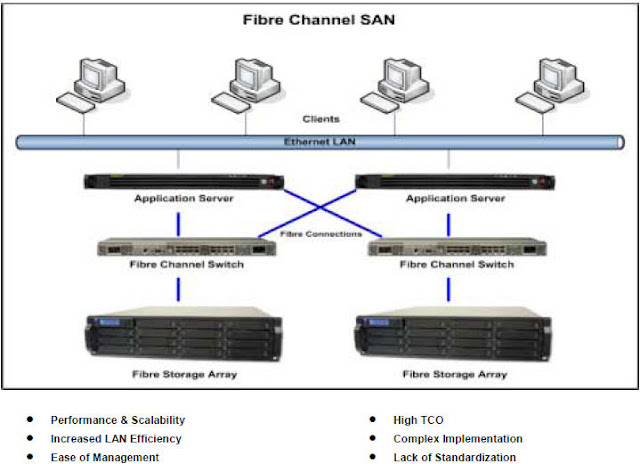SAN (Storage Area Network) is a network dedicated to providing storage to enterprise servers. SANs are traditionally configured using special switches and storage devices that communicate via Fibre Channel protocol. The Fibre Channel protocol uses block-level SCSI commands which are transmitted over serial, rather than parallel connections, and can span up to 500 meters. Servers connect to the SAN using special Fibre Channel HBAs (Host Bus Adapters) capable of transmitting data at 1Gbps, 2Gpbs, and soon even 10Gbps.
SAN configurations are desirable for many reasons. SANs isolate data storage traffic on a dedicated Fibre Channel network which increases bandwidth and data availability on the enterprise LAN. SANs also offer a centrally accessible/manageable data store easing administration. While SAN storage solutions lead the pack when it comes to performance, scalability, and management, they do suffer drawbacks.
The primary disadvantage of SANs is cost. Since it is still a rather new technology, Fibre Channel equipment remains expensive, as is the support required to implement and maintain it. Another drawback of SAN is its distance limitation. Although higher than SCSI DAS, SANs still have a practical distance limitation of 250-500 meters. This limitation has proven inadequate for businesses and government agencies requiring offsite interstate disaster recovery plans. SAN solutions have been adopted by enterprise businesses, but continue to elude small and medium businesses, reluctant to implement due to costly dedicated hardware and IT support expertise.
For SAN solutions click here http://www.aberdeeninc.com/abcatg/san-storage.htm


No comments:
Post a Comment